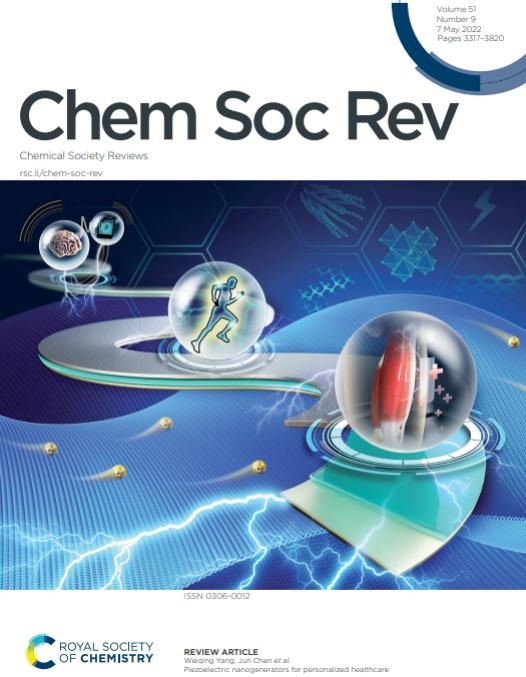从卤化物钙钛矿纳米晶体到超晶体:基本原理和应用。
IF 39
1区 化学
Q1 CHEMISTRY, MULTIDISCIPLINARY
引用次数: 0
摘要
卤化物钙钛矿超晶体,也被称为超晶格,是一种电子耦合的低维材料,如纳米晶体、量子点或纳米片,它们具有与其组成部分不同的集体光学和电子特性。卤化物钙钛矿的固有介电性能和缺陷容忍度使其超晶体优于金属硫系超晶体。配体的物理化学性质以及组成成分的形状和尺寸均匀性决定了这些超晶体的总体尺寸、形状以及电子和光学性质,其中激子通过相相干性和偶极子耦合进行长距离相互作用,诱导增强和窄带发射,包括超荧光、超辐射、放大自发发射和激光。这些新兴的光学和电子特性使得卤化物钙钛矿超晶体有望用于发光二极管、低阈值激光器、高效太阳能电池和宽带光电探测器。本文提供了卤化物钙钛矿超晶体的最新概况,解决了它们的结构-性能关系之间的关键差距,并将电子耦合的基本机制与它们的新兴光电性能联系起来。本文章由计算机程序翻译,如有差异,请以英文原文为准。
From halide perovskite nanocrystals to supercrystals: fundamentals and applications.
Halide perovskite supercrystals, also known as superlattices, are electronically coupled low-dimensional materials, such as nanocrystals, quantum dots, or nanoplatelets that offer collective optical and electronic properties distinct from those of their constituents. The intrinsic dielectric properties and defect tolerance of halide perovskites make their supercrystals superior to metal chalcogenide supercrystals. The physicochemical properties of ligands and the shape and size uniformity of the constituents determine the overall size, shape, and electronic and optical properties of these supercrystals, where excitons interact across long distances through phase coherence and dipole coupling, inducing enhanced and narrow-band emission, including superfluorescence, superradiance, amplified spontaneous emission, and lasing. These emergent optical and electronic properties make halide perovskite supercrystals promising for brilliant LEDs, low-threshold lasers, high-efficiency solar cells, and broadband photodetectors. This article provides a state-of-the-art overview of halide perovskite supercrystals, addressing the critical gap between their structure-property relationship and linking the fundamental mechanism of electronic coupling with their emergent optoelectronic properties.
求助全文
通过发布文献求助,成功后即可免费获取论文全文。
去求助
来源期刊

Chemical Society Reviews
化学-化学综合
CiteScore
80.80
自引率
1.10%
发文量
345
审稿时长
6.0 months
期刊介绍:
Chemical Society Reviews is published by: Royal Society of Chemistry.
Focus: Review articles on topics of current interest in chemistry;
Predecessors: Quarterly Reviews, Chemical Society (1947–1971);
Current title: Since 1971;
Impact factor: 60.615 (2021);
Themed issues: Occasional themed issues on new and emerging areas of research in the chemical sciences
 求助内容:
求助内容: 应助结果提醒方式:
应助结果提醒方式:


